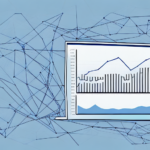Understanding LSO and Its Role in Volume Analysis
Laser Speckle Contrast Imaging (LSO) is a non-invasive imaging technique that utilizes a laser to generate high-resolution images of blood flow in biological tissues. By measuring the contrast between moving and stationary red blood cells, LSO can accurately determine blood flow and volume within specific areas of interest. This capability makes LSO an invaluable tool for volume analysis, providing precise and detailed data in real-time.
LSO has a broad range of applications in the medical field, including the diagnosis and monitoring of conditions such as peripheral artery disease, stroke, and cancer. It is also instrumental in assessing the effectiveness of treatments and interventions like chemotherapy or surgery by tracking changes in blood flow and volume over time. According to a study published in the National Institutes of Health, LSO provides reliable measurements that aid in clinical decision-making.
Moreover, LSO serves as a safe and non-invasive alternative to traditional imaging methods such as X-rays and CT scans, which expose patients to harmful radiation. This advantage not only enhances patient safety but also facilitates more frequent monitoring without the associated risks of radiation exposure.
The Benefits of Using LSO in Volume Analyzers
Implementing LSO in your volume analyzer offers several key benefits:
- Non-Invasive: LSO does not require incisions or injections, ensuring a safer and more comfortable experience for patients.
- High Resolution: It provides detailed images of blood flow and volume, enabling precise measurements.
- Real-Time Data: LSO delivers immediate data, facilitating quick and efficient analysis.
Additionally, LSO allows for the monitoring of blood flow and volume changes over time, which is particularly beneficial for patients with chronic conditions such as heart disease or diabetes. Regular monitoring is essential for ensuring effective treatment and managing disease progression.
LSO is also cost-effective compared to expensive and invasive procedures like angiography or CT scans. This affordability makes volume analysis more accessible to a broader patient population. Furthermore, the simplicity and speed of LSO procedures, typically completed within minutes, increase patient throughput and operational efficiency.
How to Connect LSO to Your Volume Analyzer
Connecting LSO to your volume analyzer involves several straightforward steps:
- Ensure Compatibility: Verify that your volume analyzer is compatible with LSO technology.
- Establish Connections: Connect the LSO imaging device to your analyzer using the appropriate cables and connectors.
- Configure Settings: Adjust the LSO settings on your analyzer to ensure accurate measurements.
Proper positioning of the LSO imaging device relative to the object being analyzed is crucial for capturing accurate data. Regular calibration of the LSO device is recommended to maintain its accuracy and performance over time.
If you encounter issues during the connection or configuration process, consult the user manual or contact the manufacturer’s technical support for assistance. Proper setup and maintenance are essential for maximizing the benefits of LSO in your volume analyzer.
Tips for Optimizing LSO for Volume Analysis
To maximize the effectiveness of your LSO system, consider the following optimization tips:
- Correct Positioning: Ensure that the LSO imaging device is accurately positioned to capture high-quality images.
- Optimize Settings: Tailor the LSO settings on your analyzer to meet your specific analysis requirements.
- Regular Calibration: Perform routine calibration to maintain measurement accuracy.
Using appropriate software for data analysis can significantly enhance the efficiency and accuracy of your LSO measurements. Select software that is compatible with your LSO system and capable of handling the volume of data generated. Tools like ImageJ offer advanced analysis capabilities that can be integrated with LSO data.
Proper sample preparation is also critical. Adhering to recommended protocols and utilizing high-quality samples ensures reliable and accurate LSO data.
Understanding the Different Types of LSO for Volume Analyzers
Various LSO systems are available for volume analyzers, each offering unique features and advantages:
- Cone-Beam Computed Tomography (CBCT): Utilizes a cone-shaped X-ray beam to capture 3D images, offering high resolution and accuracy, ideal for detailed analysis of complex structures. However, CBCT systems tend to be more expensive and less portable.
- Portable LSO Devices: Lightweight and more affordable, suitable for settings where mobility is essential.
- High-Resolution LSO Systems: Designed for applications requiring extremely detailed imaging, such as microvascular studies.
The selection of an appropriate LSO system depends on your specific analysis needs, budget constraints, and the operational environment.
How to Manage LSO Settings for Accurate Volume Analysis
Effective management of LSO settings is paramount for obtaining accurate volume analysis. Key considerations include:
- Calibration: Regularly calibrate the LSO device to maintain accuracy.
- Area of Interest: Precisely identify and focus on the area being analyzed to ensure relevant data capture.
- Specific Settings: Adjust settings based on the type of tissue being analyzed. For instance, bone tissue analysis may require different contrast settings compared to soft tissue.
Environmental factors such as temperature and humidity can influence LSO imaging accuracy. Maintaining a controlled and consistent imaging environment helps minimize these impacts.
Troubleshooting Common Issues with LSO and Volume Analyzers
LSO and volume analyzers, like any advanced technology, can encounter issues. Common problems include:
- Poor Image Quality: Often caused by improper device positioning or calibration issues.
- Incorrect Measurements: May result from incorrect settings or malfunctioning hardware.
- Device Malfunctions: Hardware failures or software glitches can disrupt normal operations.
Effective troubleshooting may involve adjusting settings, recalibrating the system, or seeking technical support from the manufacturer.
Best Practices for Using LSO with Volume Analyzers
Adhering to best practices ensures optimal performance of your LSO system:
- Regular Calibration and Testing: Maintain system accuracy through routine calibrations and performance tests.
- Proper Positioning: Ensure the LSO device is correctly positioned to capture optimal images.
- Maintenance: Keep the LSO system clean and well-maintained to prevent technical issues.
- Training and Education: Provide ongoing training for personnel to ensure proficient system operation.
Integrating LSO with other equipment and software, such as Electronic Health Records (EHR) and Picture Archiving and Communication Systems (PACS), can streamline workflows and enhance data management.
Regularly reviewing and analyzing data collected through LSO can help identify trends, improve patient care, and detect any system errors promptly.
How LSO Helps Improve Efficiency in Volume Analysis
LSO enhances the efficiency of volume analysis by delivering real-time data and precise measurements, which facilitate quicker decision-making and timely interventions. The non-invasive nature of LSO allows for multiple scans without recovery time or hospitalization, increasing patient throughput.
High-resolution imaging capabilities of LSO enable the detection of abnormalities in soft tissues and organs, such as the liver or kidneys. Accurate volume measurements aid in early disease detection and monitoring treatment efficacy.
Integrating LSO with other imaging techniques like CT or MRI provides comprehensive analyses of patient conditions, leading to more accurate diagnoses and effective treatment plans, ultimately improving patient outcomes.
Integrating LSO with Other Analytical Tools for Comprehensive Data Insights
Combining LSO with analytical tools like ultrasound and MRI offers a more holistic view of blood flow and volume in tissues. This integration enables more accurate diagnoses and informed treatment plans by providing multifaceted data insights.
Tracking disease progression becomes more effective when LSO data is analyzed alongside other imaging modalities. Monitoring changes in blood flow and volume over time allows for the assessment of treatment effectiveness and adjustments as necessary, leading to better patient outcomes.
Advanced Techniques for Utilizing LSO in Volume Analysis
Advanced LSO techniques expand its application in volume analysis, including:
- Cerebral Blood Flow Measurement: Utilizing LSO to assess blood flow in the brain, aiding in stroke and trauma management.
- Small Animal Imaging: Optimizing LSO for preclinical studies involving small animal models.
- Microvascular Blood Flow Monitoring: Tracking blood flow in microvascular networks for detailed physiological studies.
These advanced applications require specialized knowledge and may necessitate additional equipment or software to achieve desired outcomes.
Staying Up-to-Date with the Latest Developments in LSO Technology
The field of LSO technology is rapidly evolving, with continuous advancements in devices, techniques, and applications. Staying informed about the latest developments is essential for maintaining optimal system performance and leveraging new capabilities.
Engage with industry conferences, subscribe to relevant scientific journals, and participate in professional networks to keep abreast of emerging trends and innovations. Collaborating with LSO experts and attending training sessions can also enhance your understanding and utilization of the technology.
Case Studies: Real-World Examples of Successful Implementation of LSO in Volume Analysis
Numerous case studies showcase the successful implementation of LSO in volume analysis across various settings:
- Clinical Diagnostics: LSO has been effectively used in diagnosing and monitoring peripheral artery disease, providing detailed blood flow measurements that guide treatment decisions.
- Research Applications: Researchers have employed LSO to study cerebral blood flow dynamics, contributing to advancements in neuroscience and stroke research.
- Oncological Assessments: LSO assists in evaluating tumor vascularization and response to chemotherapy, enabling tailored treatment strategies.
These examples demonstrate LSO's versatility and efficacy in enhancing the accuracy and efficiency of volume analysis, ultimately improving patient care and research outcomes.
Conclusion: Unlocking the Full Potential of Your Volume Analyzer with LSO
Laser Speckle Contrast Imaging (LSO) is a powerful tool for volume analysis, offering accurate and detailed real-time data. By effectively connecting, optimizing, and managing LSO within your volume analyzer, you can fully harness its capabilities to improve patient outcomes and streamline analytical processes. Whether you are a researcher, clinician, or healthcare provider, integrating LSO into your analytical toolkit can significantly enhance your volume analysis procedures.




















